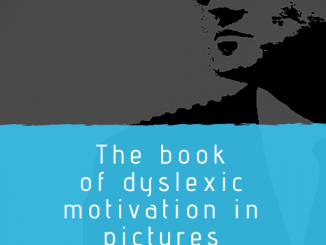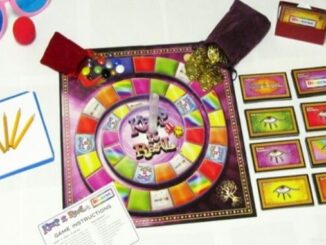
The process of designing applications and software that are usable by a wide range of people is a tricky task itself, however, extra consideration must be taken when looking to implement design decisions that would be appropriate for a neurodiverse audience. Whilst it is a very noble but difficult task to make something that can be used by everyone without any problems whatsoever, it is important to make an effort to make choices that benefit as many users as possible. This creates a more positive public image whilst increasing the amount of people who can use your product. Hopefully this article will help you get started in moving your decision making process in the right direction.
What is Neurodiversity?
Neurodiversity or being neurodivergent is a term that was created to describe the social movement towards having different neurological conditions being accepted and respected within society. Nick Walker highlights that the Neurodiversity Paradigm is to be understood to be a form of human diversity that shares the same social dynamics of other forms of diversity (such as power and oppression) and seeks to reduce cultural prejudices and oppression by highlighting that accepting diversity is a great source of creative potential (What is Neurodiversity?, 2020).
The TLDR (Too Long, Didn’t Read) version is that everyone’s minds work differently from one another and that is something that should be widely accepted as a biological fact part of what makes someone unique.
Different types of Neurodiversity
Neurodiversity is a rather broad term which categorises many different neurological conditions that would cause someone’s neurocognitive functions to be different from those who’re considered neurotypical (Someone that society deems to have normal cognitive functions). Some of the conditions that fall under the Neurodiverse category include; Autism Spectrum Disorder (ASD), Attention Deficit Hyperactivity Disorder (ADHD), Dyslexia, Dyspraxia, Dyscalculia and Tourette Syndrome.
It is important to note that psychotherapists who integrate this paradigm in their work aren’t attempting to “cure” any of these aforementioned conditions, but rather work with people to find ways of accepting their condition provide support for those who learn differently and help them overcome any oppression that they may’ve experienced in their life.
Dr. Nick Walker has shared a nice post on his website which provides useful terms and definitions around this subject so check that out if you can. (Walker, 2014)
Extra steps towards Neurodiverse design
Whilst the appropriate design decisions really depend on the product that you’re working on, it is important to take into account some choices that would be beneficial to a neurodivergent audience.
The first few steps that I’m going to share are provided by the British Dyslexia Association and covers
most of the basic design choices that I feel are necessary to cover the bare minimum requirements
for most neurodivergent users without being too taxing or difficult to implement. (British Dyslexia
Association, 2020)
- Make sure that you’re using sans serif font such as Arial, Comic Sans, Verdana, Tahoma or
OpenDyslexic. These make the text appear less crowded and easier to read. - Stick to a font size around 12-14 or an equivalent (1-1.2em or 19-19px) as a larger font size is
easier to read. - Avoid underlining and italics as this may look too crowded for some readers, use bold text
for emphasis instead. - Ensure that headings are at least 20% larger than your normal text and ensure that any
hyperlinks that you use look different from your headings and normal text. - Use single colour backgrounds and avoid using complex or distracting background patterns
or pictures. - Use dark coloured text on a light background, ensuring that the background isn’t white as
this would create a contrast that is harsh on the eyes. - Avoid using green or red/pink as the most common form of colour-blindness is red-green or
Deuteranopia.
In addition to these steps, Kay Sargent shares their insight on WorkDesign Magazine on designing
with Neurodiversity and Inclusion in mind and points out some of the different sensitivities within
the different neurodivergent conditions which is well worth the read, especially as it includes
information including how some Neurodiverse people are particularly sensitive to sensory inputs
such as sounds and sight. (Sargent, 2020) With this in mind, it would make the design decision of
having user inputs provide visual and auditory feedback such as sound playing and colours changing
when the user presses a button or an option in a menu be beneficial to a neurodiverse user.
I hope that this helps you get in the right mindset for approaching design that is beneficial to a
Neurodiverse audience and to finish off I wanted to share a particularly interesting conference paper
which shares a framework for involving Neurodiverse children in within the design process of new
technology, definitely an interesting read! (Benton et al., 2014)
References and further reading:
Benton, L. et al. (2014) ‘Diversity for design: A framework for involving neurodiverse children in the technology design process’, in Conference on Human Factors in Computing Systems – Proceedings.
Association for Computing Machinery, pp. 3747–3756. doi:10.1145/2556288.2557244.
British Dyslexia Association (2020) Dyslexia friendly style guide – British Dyslexia Association. Available at: https://www.bdadyslexia.org.uk/advice/employers/creating-a-dyslexia-friendly-workplace/dyslexia-friendly-style-guide (Accessed: 2 August 2020).
Sargent, K. (2020) Designing for Neurodiversity and Inclusion – Work Design Magazine. Available at:
https://www.workdesign.com/2019/12/designing-for-neurodiversityand-inclusion/ (Accessed: 3 August 2020).
Walker, N. (2014) Neurodiversity: Some Basic Terms & Definitions. Available at: https://neurocosmopolitanism.com/neurodiversitysome-basic-terms-definitions/ (Accessed: 2 August 2020).
What is Neurodiversity? (2020). Available at: https://autisticuk.org/neurodiversity/ (Accessed: 1 August 2020).
- Observing how games teach players to think and plan ahead - 12th March 2021
- Learning about systems using games. - 15th January 2021
- Focus on… Wargaming and Wargames - 8th November 2020





Be the first to comment